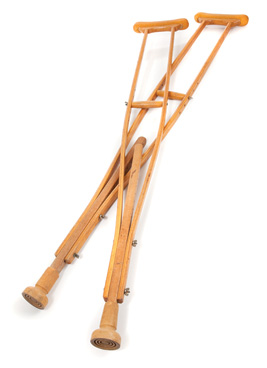 I don’t know about you, but for me that kind of tired is especially dangerous. When you are that tired your inhibitions tend to take the evening off, and whatever common sense you might have left is compromised almost instantly. You can actually hear the tumblers clicking inside your head as the dial spins: two turns left to eight – stop; one turn right to 23 – stop; two turns left again to 46 – stop; turn the handle clockwise.
I don’t know about you, but for me that kind of tired is especially dangerous. When you are that tired your inhibitions tend to take the evening off, and whatever common sense you might have left is compromised almost instantly. You can actually hear the tumblers clicking inside your head as the dial spins: two turns left to eight – stop; one turn right to 23 – stop; two turns left again to 46 – stop; turn the handle clockwise.
You can feel that last tumbler drop, and almost see the handle move a quarter turn to the right as the vault door in your head slowly creaks open and all your personal demons and monsters, the ones you’ve kept locked away from polite company for so long, come flying past the door howling and screaming like all the hounds of hell — at least, that’s the way it feels.
I have come to find that kind of tired all too familiar. Two parts mental exhaustion, one part physical, one part emotional.
The primary cause of this particular kind of exhaustion is juggling. It takes a lot of energy to juggle family, friends, personal relationships, industry responsibilities and your shop responsibilities. I’ll bet you’ve also become just as good at keeping some of those same balls in the air and off the ground.
Add developing two breakfast keynote speeches delivered a few weeks apart and toss in a three-hour management seminar just for good measure, and you have a recipe guaranteed to produce strange thoughts and stranger thinking. So, it wasn’t much of a surprise that’s where my mind wandered, goaded and guided by the same personal and professional demons I mentioned just a moment ago.
With no “governor” to restrain it, your mind can race out of control. With the part of your brain responsible for critical thinking dulled by exhaustion and lack of sleep, there is really no telling where that may take you other than the realization that wherever it is, trouble will be right there waiting for you when you finally arrive. Since I’m no stranger when it comes to trouble, that doesn’t frighten me. It probably should…and, it probably would, if I wasn’t always so damned tired. But, it doesn’t.
Consequently, I find myself sitting at my desk, in front of my computer, sharing all of this with you instead of crawling into bed where I belong…with the pillow and covers pulled tightly over my head so the monsters won’t find me!
This particular bout of exhaustion was focused on our industry and a host of random observations made, documented and carried forward like the balance in an old general ledger, numbers that seemed suddenly of much greater concern then they have in the past. You see, up until the first two presentations were due, I hadn’t really thought much about the industry that exists outside my door for what seemed like a very long time. In fact, with the exception of my writing, I had consciously decided to take a year off and not think about it at all — at least not in the same compulsive, obsessive way I normally do. And, for the most part, I was successful.
In fact, I was doing fine until I started working on the presentations. And, even then, I was OK…for awhile.
The two keynote speeches had nothing to do with the Industry (Industry with a capital “I”). And, the seminar was all about shop operations and the Cost of Doing Business. It was the “Who” I would be working for that started me thinking about the Aftermarket, our Industry and affiliation in general.
You see, I was working for two large state associations: one here on the Left Coast and the other on the Right. Both are strong and working to get stronger. Both care deeply about their members, the Industry, the Aftermarket and the motoring public. Both are led by lay-leaders: shop owners like you and me. Both are professionally managed. Both are indicative of the many other state, local and national associations working hard to create value for their members, working hard to make this industry better for all of us. And, both are struggling to keep the members they have, struggling to reach out to a new generation of shop owners, a new generation of potential members, in an age in which membership in just about every organization, club or association is steadily declining.
As my mind began to wander, I started thinking about many of the people I have and have had the privilege to know and work with over the years. Virtually all of them had at least one thing in common, they were all affiliated with at least one association. And, then I started wondering, What made them join? What makes anyone want to belong to anything?
What made them work so hard and give so much while expecting so little in return? I found myself wondering why there are so damned many groups and associations to belong to! And, then, I started wondering about how they all survive.
I am not without a little industry association experience of my own. But that personal experience hasn’t helped very much. It seems that even if you were able to achieve some understanding of what is going on here, which isn’t really all that hard to do, it’s likely you will still find yourself struggling with the why!
Even if you account for ego, the “what” is still really all about giving back: helping others and leaving a legacy for those who will follow you. That’s about as easy to understand as it is ever going to get.
It’s the “Why” I consistently seem to have a problem with. Why is the service industry as fragmented as it is? Why are there so many different associations trying to accomplish the same goals and objectives? Why are we so fractious, so unwilling to listen, so quick to go our own way? Why are so few involved when so many could benefit so much from their knowledge and experience? And, most of all, Why does it have to be this way?
Some people would have you believe that we take the “independent” in Independent Shop Owner too literally. But is that really it?
Others would have you believe that it is unreasonable to expect all of us to agree on everything, that diversity is healthy. But, as far as I can tell, the only thing that is unreasonable is our inability to recognize and respond to the key issues crippling our industry…as an industry.
You would think that as much as things have changed and as difficult as it has become to achieve success in our industry today, someone would have discovered how much easier it would be if we could speak with just one voice — one clear and unified voice, a voice so loud, with numbers so large, and a force so great — we would no longer be ignored.
I see the world in pictures and think in metaphors. What I see when I look at our industry is simple. This industry is broken. It is suffering from multiple fractures and lacerations that have left us weak and unable to stand on our own. These compound fractures are severe, leaving the structures that might otherwise add strength and stability to our lives, shattered. Left to heal by itself and without proper care, the only thing any of us can be sure of is that the end result will be less than satisfactory, an industry left deformed, weak, less than whole.
Is it because no one understands? I don’t think so.
Even our ancient ancestors realized that a broken bone had to be set before it could heal properly. They understood thousands of years ago that those broken pieces had to be moved back into place and aligned with one another. They knew those broken pieces had to be bound together so they could grow together.
If they recognized and realized these simple truths thousands of years ago, it’s hard to understand how or why it is impossible for us to recognize and respond to them today.
The solution is simple, the call to action clear: Bring those broken pieces together so they can heal; bind them together to help make them stronger.
If you have never affiliated, find an association that you can work for and that will work for you and then join it. Identify the shop owners within that group who might benefit from your experience and teach them, at the same time, allow those shop owners who are farther along the path you have chosen to help teach you.
If you are already affiliated, reach out to those shop owners in your area who have not yet found sufficient reason to join you and give them a reason. Show them the difference associational involvement can make, demonstrate its relevance.
If you are a leader already involved in an association, reach out to the other associations in your area or across the country working hard to achieve the same goals and objectives for our industry you are. You don’t have to join them to join with them.
And, perhaps, that’s it. Perhaps, the time has come for us to create an association of associations that understands a compound fracture that is set correctly, bound tightly and allowed to heal properly is in the end stronger than one never stressed or tested. Perhaps, it is time for us to focus on the things we can fix, the things we can change, while putting aside the issues that divide us.
Perhaps, it’s time we realized that while we don’t always have to agree on everything in order to act, we do have to act in order to save ourselves and our industry.













